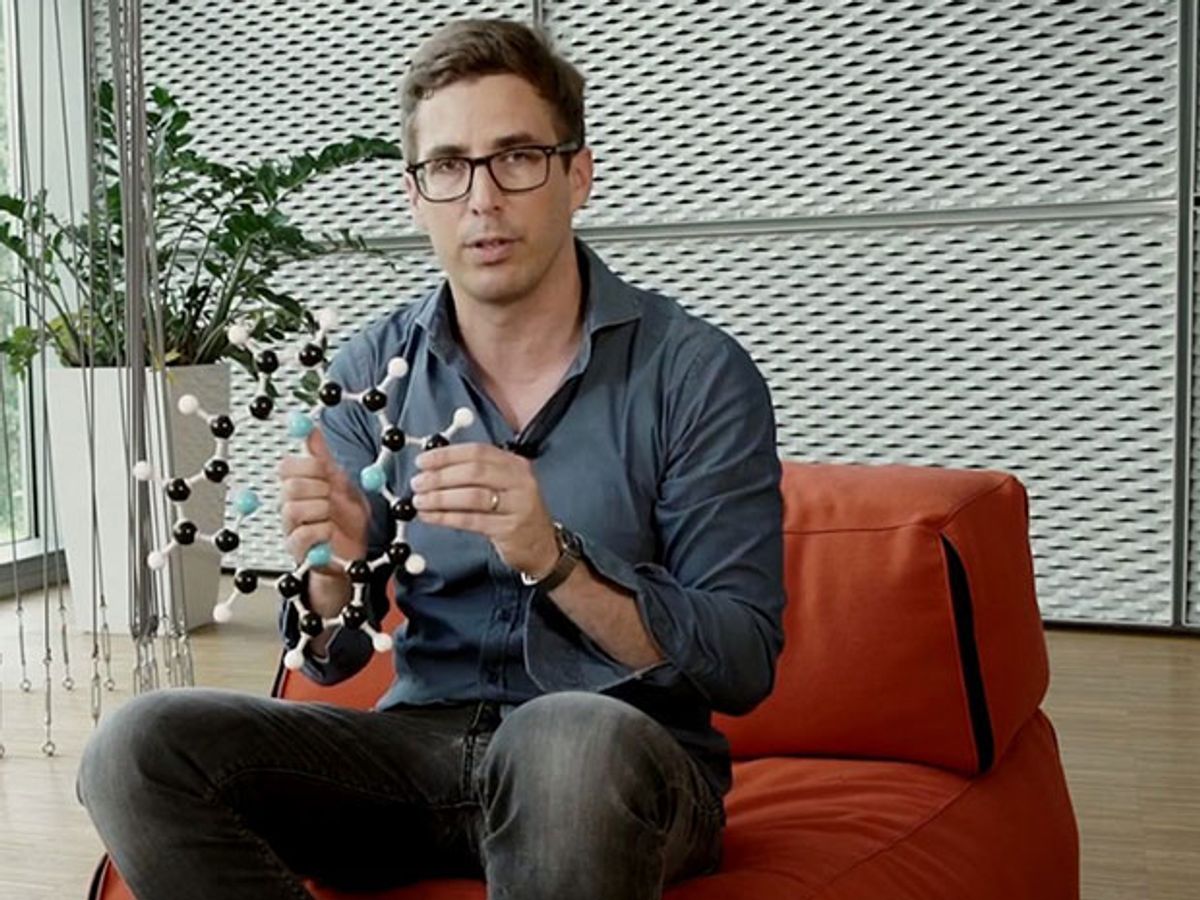The hemoglobin-like molecule called porphyrin, which is responsible for making photosynthesis possible in plants and transporting oxygen in our blood, has been combined with graphene by researchers at the Technical University of Munich (TUM) in a new method that may make possible everything from molecular electronics to improved gas sensors.
While graphene’s properties—ranging from its electrical conductivity to its tensile strength—have made it desirable in a number of electronic applications, it still needs to be combined with so-called functional molecules to make it useful in applications such as photovoltaics and gas sensors. To date, the addition of these other functional molecules has been carried out through “wet chemistry,” which limits the amount of control possible over the properties of the resulting material.
However, in a method described in the journal Nature Chemistry, the TUM researchers developed a highly controllable “dry” method based on exploiting the catalytic properties of a silver surface on which the graphene layer rested inside an ultra-high vacuum.
The benefit of this technique is that it preserves all the attractive properties of the porphyrins even after being combined with the graphene, most notably their intrinsic ability to have their electronic and magnetic properties tuned by the addition of different metal atoms. In terms of real-world devices, this means that these different metal atoms can bind with gas molecules to create effective gas sensors.
More generally, the method the TUM researchers have developed could be a breakthrough for how graphene is functionalized for a range of electronic applications.
“The key to the importance of this research in terms of electronics is the complementary electronic structure in the graphene and the porphyrins,” said Wilhelm Auwärter, a professor at TUM who led the research, in an e-mail interview with IEEE Spectrum. “The porphyrins feature large electronic gaps, in contrast to graphene. The electronic, optical and magnetic properties of the porphyrins can be tuned by the choice of the metal center of the molecule.” Electronic band gaps are critical to controlling how conductive a material is, and in turn, whether or not the material can be used in an electronic switch such as a transistor.
Auwärter further explains the electronic and magnetic properties of the porphyrins can also be modified by the attachment of gaseous ligands (like oxygen or nitric monoxide), This would allow, for example turning on and off the material’s mechanical response to a magnetic field. “Such functionalities are not inherent to the pristine graphene,” he added.
Auwärter also said that it should be possible to directly incorporate porphyrins into graphene nanoribbons. “In this way, one could achieve sequences of graphene ‘wires’ and porphyrin units. This should allow the engineering of an electronic gap in the hybrid structures,” he said.
While Auwärter believes that this manufacturing approach provides an avenue that could lead to new device designs for a range of electronic applications, he does concede that this is preliminary research that primarily serves as a starting off point.
“We need to apply our protocol to well-defined graphene nanostructures, such as nanoribbons or nanographenes,” said Auwärter. “We need to place the hybrid structures on specific supports or to include them in layered materials and devices.”
In the future, to exploit this method for electronic applications, Auwärter points out that the hybrid material will need to be grown on insulating supports like hexagonal boron nitride.
While the electronic applications may still be somewhat far off, the novel protocol does offer an intriguing way forward for graphene-based electronics.
Dexter Johnson is a contributing editor at IEEE Spectrum, with a focus on nanotechnology.



